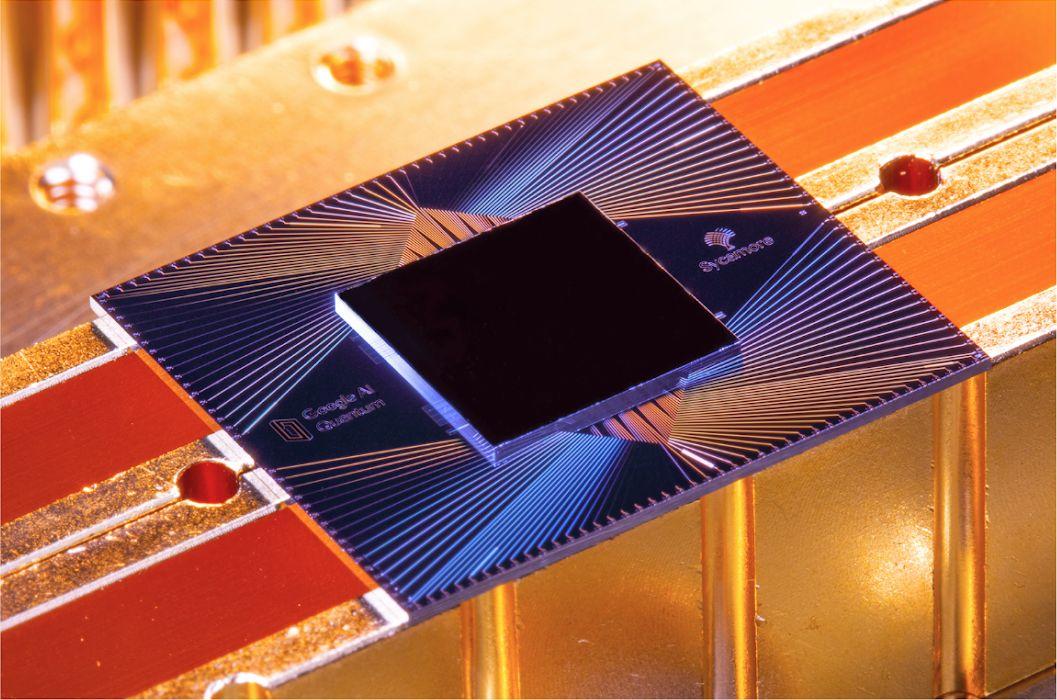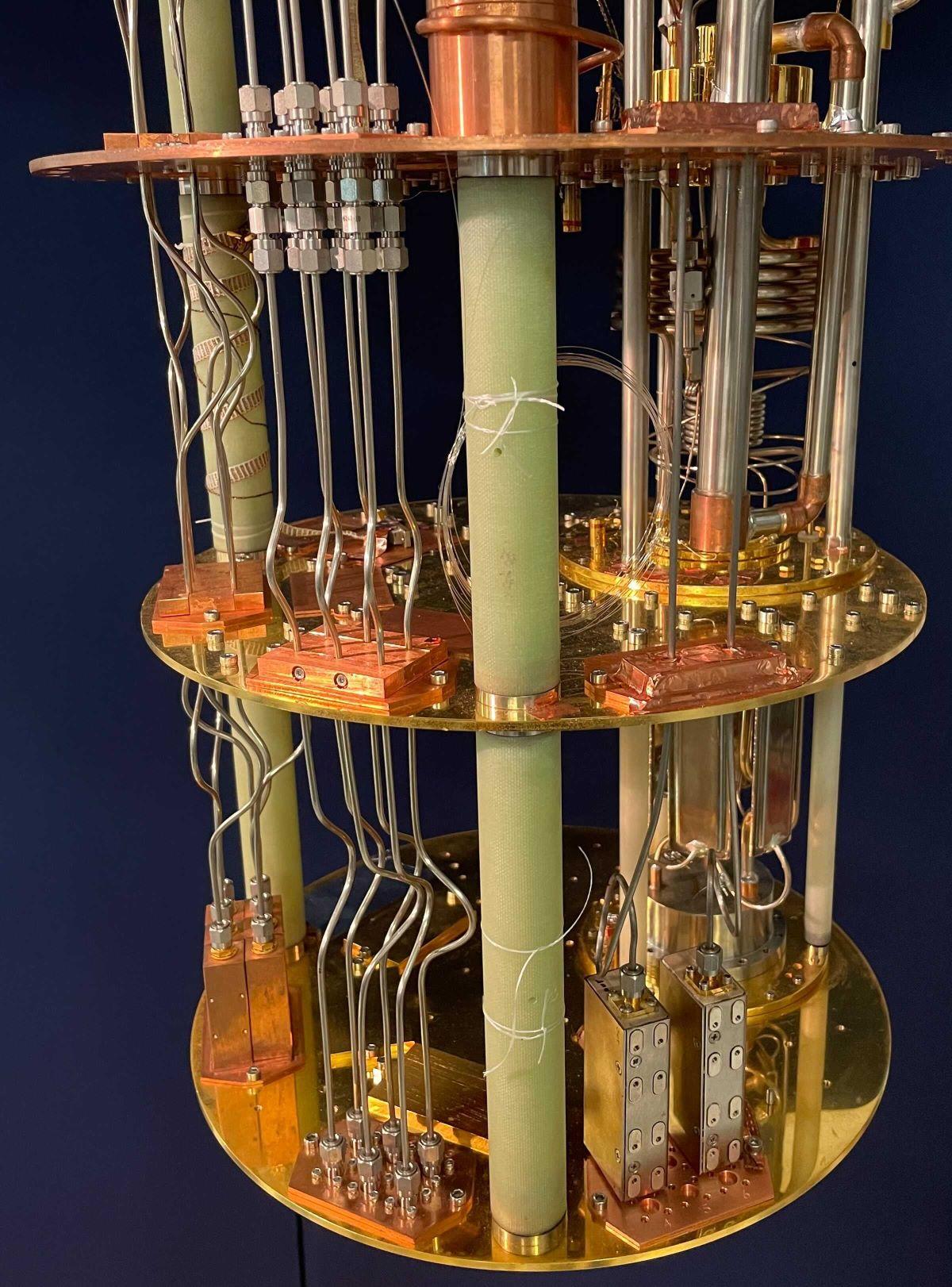Quantum Computing: How Basic Broadband Fiber Could Pave The Way To The Next Breakthrough

Google's Sycamore quantum processor.
Image: GoogleThe usefulness of most quantum computers is still significantly limited by the low number of qubits that hardware can support. But simple fiber optic cables – just like the ones used for broadband connections – could be the answer.
A team of researchers from the National Institute of Standards and Technology (NIST) found that, with just a few tweaks, optical fiber can be used to communicate with the qubits sitting inside superconducting quantum computers, with the same level of accuracy as existing methods.
Unlike the metal wires currently used, it is easy to multiply the number of fiber optic cables in a single device, which means it is possible to communicate with more qubits. According to NIST, the findings pave the way to packing a million qubits into a quantum computer. Most devices currently support less than a hundred.
SEE: Hiring Kit: Computer Hardware Engineer (TechRepublic Premium)
Superconducting quantum computers, such as the ones that IBM and Google are building, require qubits to sit on a quantum processor that is cooled to a temperature of 15 milikelvin – colder than outer space – to protect the particles' extremely fragile quantum state.
But whether to control the qubits or measure them, researchers first need to communicate with the processor. This means a connection line must be established between room-temperature electronics and the cryogenic environment of the quantum circuit.
Typically, scientists use microwave pulses to communicate with qubits. With different frequencies and durations, the pulses can influence the state of the qubit; or researchers can look at the amplitude of the reflected microwave signal to "read" qubit-based information.
Microwave pulses are normally sent down to the ultra-cold qubits through coaxial metal cables. This comes with a practical problem: sets of metal cables can be used to connect with to up to 1,000 qubits, after which it becomes physically unworkable to build more wiring in a single system.
Yet companies have ambitious goals when it comes to scaling up quantum computers. IBM, for example, is expected to surpass the 1,000 qubit mark by 2023 with a processor called IBM Quantum Condor, and is eyeing a long-term goal of a million-qubit quantum system.
John Teufel, a researcher at NIST who worked on the institute's latest research, explains that coaxial metal cables won't cut it for much longer. "The focus of most real-life quantum computing efforts has been to push forward using conventional wiring methods," Teufel tells ZDNet.
"While this has not yet been the bottleneck for state-of-the-art systems, it will become important in the very near future...All the companies that are pursuing quantum-computing efforts are well aware that new breakthroughs will be required to reach their ultimate goal."

The researchers opted to replace metal cables with familiar optical fiber technology.
Image: NISTTo address this issue, Teufel and his team at NIST opted to replace metal cables with familiar optical fiber technology, which, based on a glass or plastic core, was anticipated to carry a high volume of signals to the qubits without conducting heat.
Using conventional technology, the researchers converted microwave pulses into light signals that can be transported by the optical cables. Once the light particles reach the quantum processor, they are converted back into microwaves by cryogenic photodetectors, and then delivered to the qubit.
Optical fiber was used to both control and measure qubits, with promising results: the new set-up resulted in accurate rendering of the qubit's state 98% of the time, which is the same accuracy as obtained using regular coaxial lines.
Teufel and his team now envision a quantum processor in which light in optical fibers transmits a signal to and from the qubit, with each qubit talking to a wire. "Unlike conventional metal coaxial cables, the fiber itself is not the bottleneck for how many qubits you could talk to," says Teufel. "You could simply give each qubit a dedicated fiber through which to send signals, even for a million-qubit system. A million fibers seems feasible, while a million coaxial lines does not."
Another advantage of optical cable, notes Teufel, is the information carrying capacity of a single fiber, which is much greater than that of a metal cable. Many more signals – up to several thousand – can be sent through one optical wire, and the scientist envisions separating and re-routing those signals to different qubits in the processor. This would effectively enable a single fiber optic cable to talk to several qubits at once.
- Less is more: IBM achieves quantum computing simulation for new materials
- BMW explores quantum computing to boost supply chain efficiencies
- Microsoft's quantum cloud computing plans take another big step forward
The experiment is yet to be carried out. In the meantime, Teufel is confident that all eyes will be on NIST's latest findings. "Novel wiring methods, like the one we have shown here, will eventually be required to maintain the incredible growth trajectory of quantum computing efforts," says Teufel.
"We do not suggest that our new method is the only long-term solution, but we are excited to see that this new idea looks incredibly promising. I expect that companies will be looking closely at this work to see if these new methods can be incorporated into their future strategies."
Reassessing AI Investments: What The Correction In US Megacap Tech Stocks Signals
The recent correction in US megacap tech stocks, including giants like Nvidia, Tesla, Meta, and Alphabet, has sent rippl... Read more
AI Hype Meets Reality: Assessing The Impact Of Stock Declines On Future Tech Investments
Recent declines in the stock prices of major tech companies such as Nvidia, Tesla, Meta, and Alphabet have highlighted a... Read more
Technology Sector Fuels U.S. Economic Growth In Q2
The technology sector played a pivotal role in accelerating America's economic growth in the second quarter of 2024.The ... Read more
Tech Start-Ups Advised To Guard Against Foreign Investment Risks
The US National Counterintelligence and Security Center (NCSC) has advised American tech start-ups to be wary of foreign... Read more
Global IT Outage Threatens To Cost Insurers Billions
Largest disruption since 2017’s NotPetya malware attack highlights vulnerabilities.A recent global IT outage has cause... Read more
Global IT Outage Disrupts Airlines, Financial Services, And Media Groups
On Friday morning, a major IT outage caused widespread disruption across various sectors, including airlines, financial ... Read more

